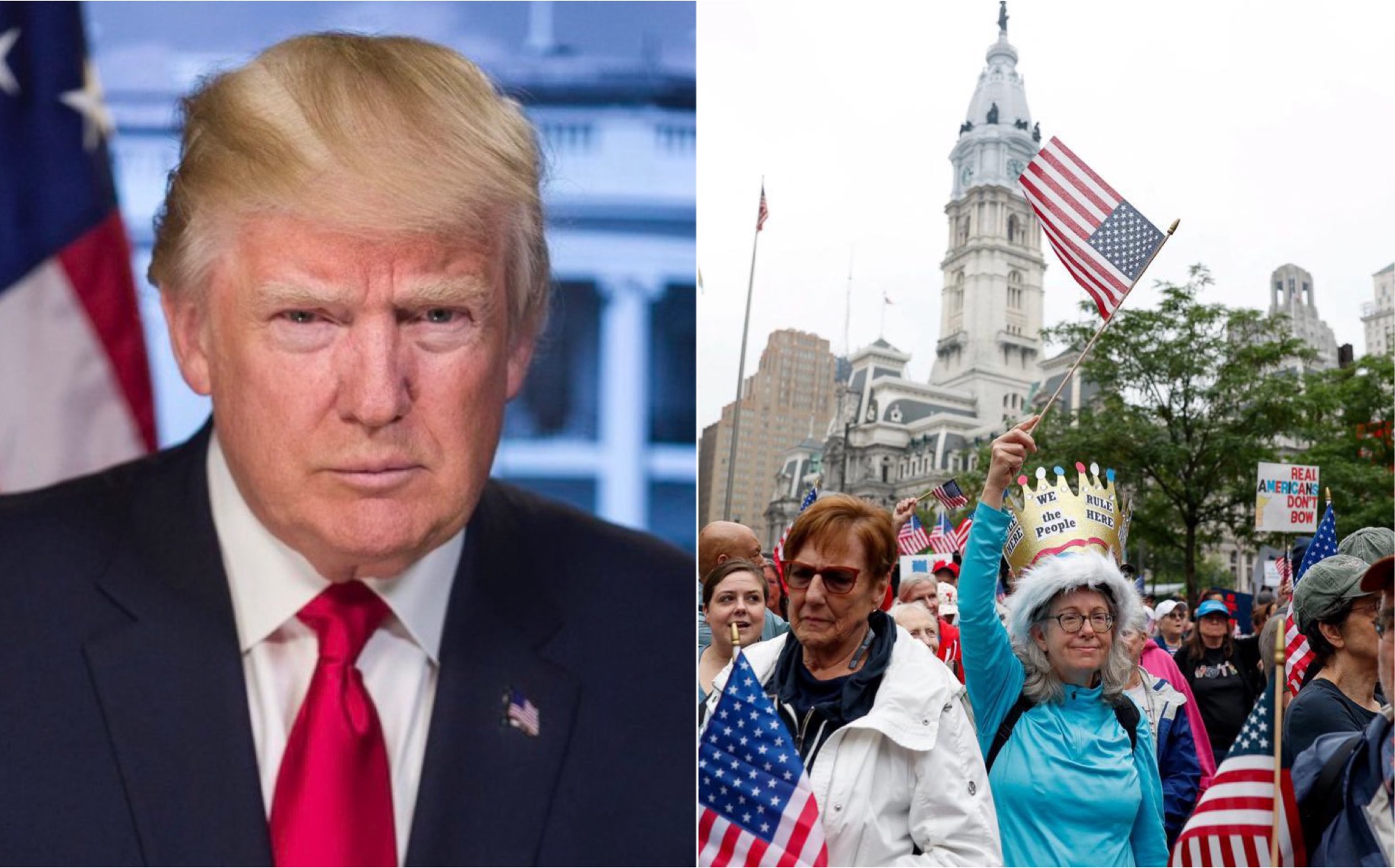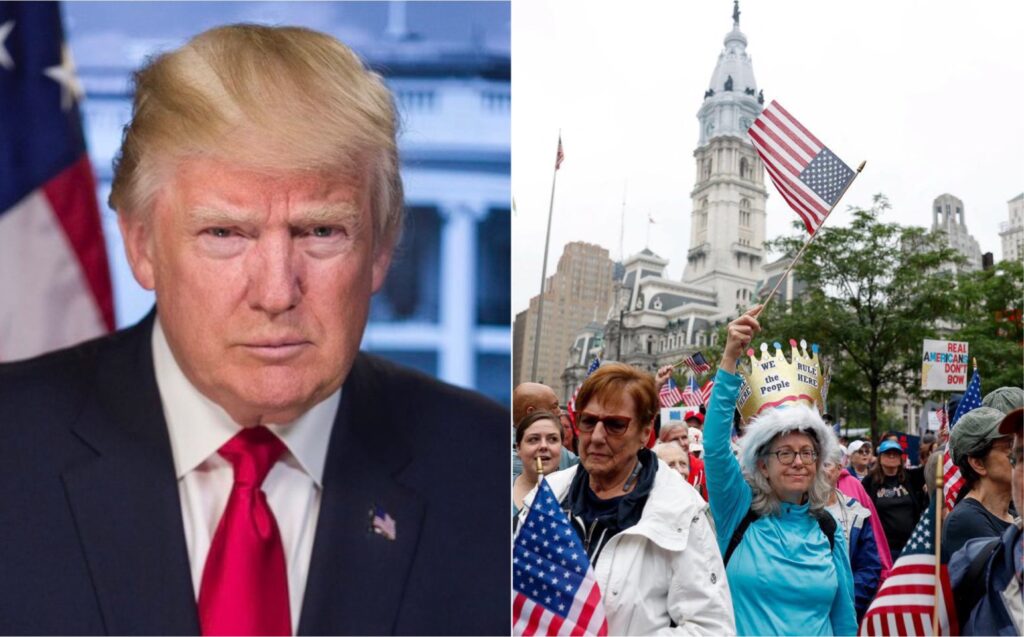NFL
Donald Trump Authorizes Aggressive Military Crackdown on ‘No Kings’ Protesters as Nationwide Demonstrations Spiral Out of Control

Trump Orders Aggressive Military Crackdown on ‘No Kings’ Protesters as Nationwide Unrest Escalates
By Ace Reporter
June 14, 2025
Washington, D.C. – President Donald Trump has authorized the deployment of federal troops with orders to use aggressive force to quell the rapidly escalating “No Kings” protests that have swept across major U.S. cities, plunging the nation into a state of heightened tension. The decision, announced late Friday evening, follows weeks of growing unrest sparked by the loosely organized movement, which has demanded sweeping reforms to curb concentrated political and economic power.

The “No Kings” protests, which began as peaceful demonstrations in cities like Chicago, Atlanta, and Seattle, have grown increasingly chaotic, with reports of property damage, clashes with law enforcement, and sporadic violence. The movement, lacking a centralized leadership structure, has rallied under the slogan “No Kings, No Crowns,” advocating for measures ranging from campaign finance reform to antitrust actions against corporate monopolies. However, the protests’ decentralized nature has led to splinter groups engaging in confrontational tactics, overwhelming local police in several urban centers.
In a televised address from the White House, President Trump described the protests as “anarchist riots” that threaten national stability. “We cannot allow lawlessness to tear apart our great country,” Trump said. “I have directed our brave military to restore order swiftly and decisively. The American people deserve safety, and we will deliver it.” The president’s order invokes the Insurrection Act of 1807, granting him authority to deploy active-duty troops domestically, a move last used on a significant scale during the 1992 Los Angeles riots.
Military Deployment Sparks Controversy
By Saturday morning, armored vehicles and National Guard units were visible in cities like New York, Los Angeles, and Minneapolis, where protests have been most intense. In Chicago’s Loop district, eyewitnesses reported tear gas and rubber bullets being used to disperse crowds near City Hall, where hundreds of “No Kings” demonstrators had gathered. Social media footage showed soldiers in riot gear forming cordons around key government buildings, with some protesters alleging excessive force.
The deployment has ignited fierce debate. Supporters of the president argue that the escalation is necessary to prevent further chaos. “Local authorities have lost control,” said Senator James Hargrove (R-Texas) in a statement. “President Trump is doing what any leader would do: protecting our cities from descending into anarchy.” On X, posts from conservative accounts echoed this sentiment, with hashtags like #RestoreOrder trending alongside images of burning storefronts attributed to protest-related violence.
Critics, however, warn that the military response risks inflaming tensions and eroding civil liberties. “This is a dangerous overreach,” said Representative Maria Delgado (D-California). “Peaceful protesters are being lumped in with agitators, and the use of military force on American soil sets a chilling precedent.” Civil rights groups, including the ACLU, have announced plans to challenge the deployment in court, citing violations of First Amendment protections. On X, progressive activists have shared videos of alleged military confrontations, using hashtags like #NoKingsNoTyrants to condemn the crackdown.
Roots of the ‘No Kings’ Movement
The “No Kings” movement emerged in early 2025, fueled by growing public frustration over economic inequality, political gridlock, and perceived elitism in Washington and corporate boardrooms. While its demands are diverse—ranging from term limits for elected officials to breaking up tech giants—its unifying theme is a rejection of concentrated power, which protesters liken to “modern-day monarchies.” The movement’s name draws from historical anti-royalist sentiments, though its rhetoric often targets contemporary figures and institutions.
Analysts note that the protests’ lack of clear leadership has made them both resilient and volatile. “Without a single figurehead or organization, the movement is hard to negotiate with or suppress,” said Dr. Emily Chen, a political scientist at Georgetown University. “But it also means that fringe elements can hijack the message, leading to the kind of chaos we’re seeing now.”
Recent weeks have seen escalating incidents, including a fire at a federal courthouse in Portland and violent clashes in Miami that left dozens injured. Local law enforcement, stretched thin by the scale of the protests, has struggled to maintain order, prompting calls from some governors for federal assistance. Others, like California Governor Sarah Nguyen, have publicly opposed the military deployment, vowing to protect protesters’











